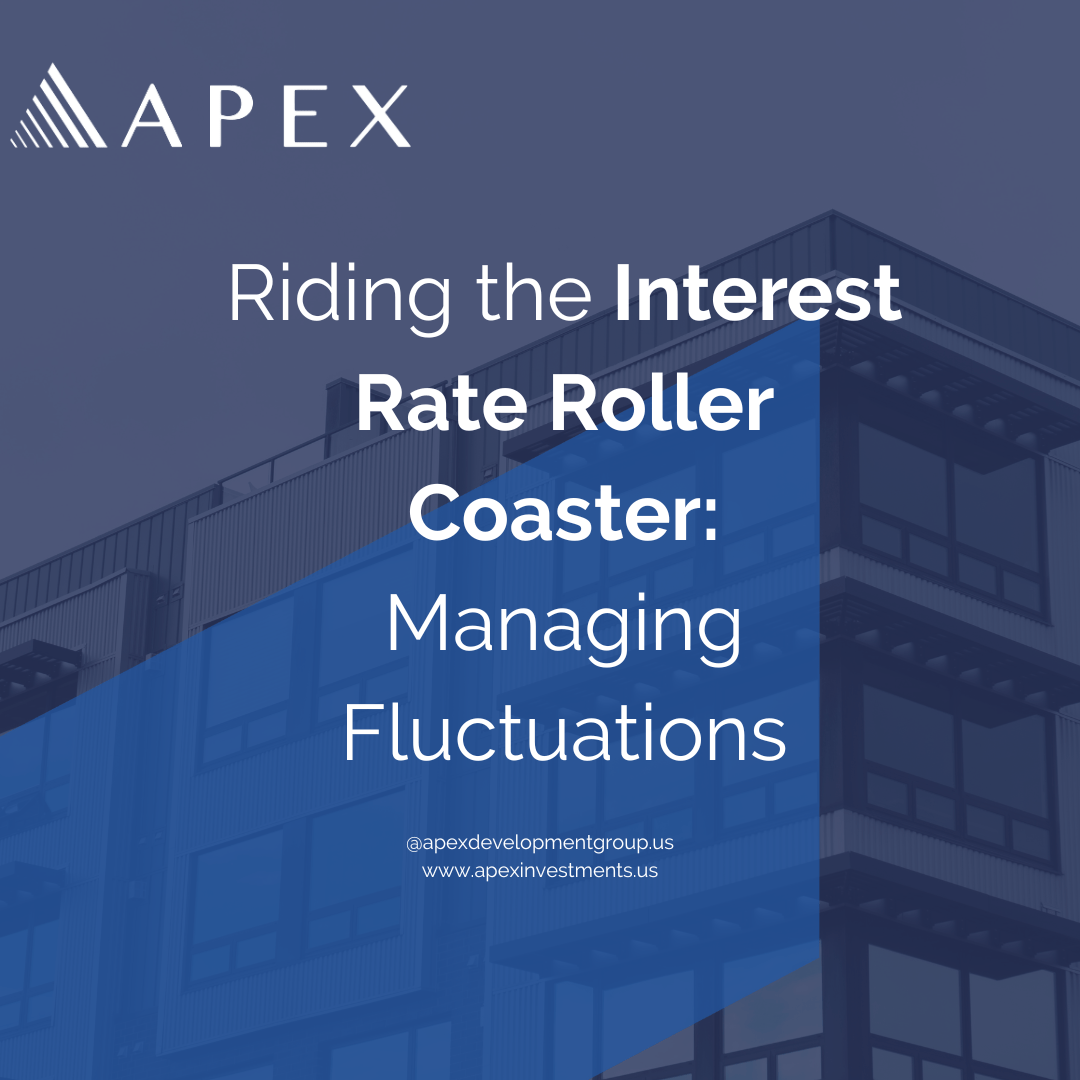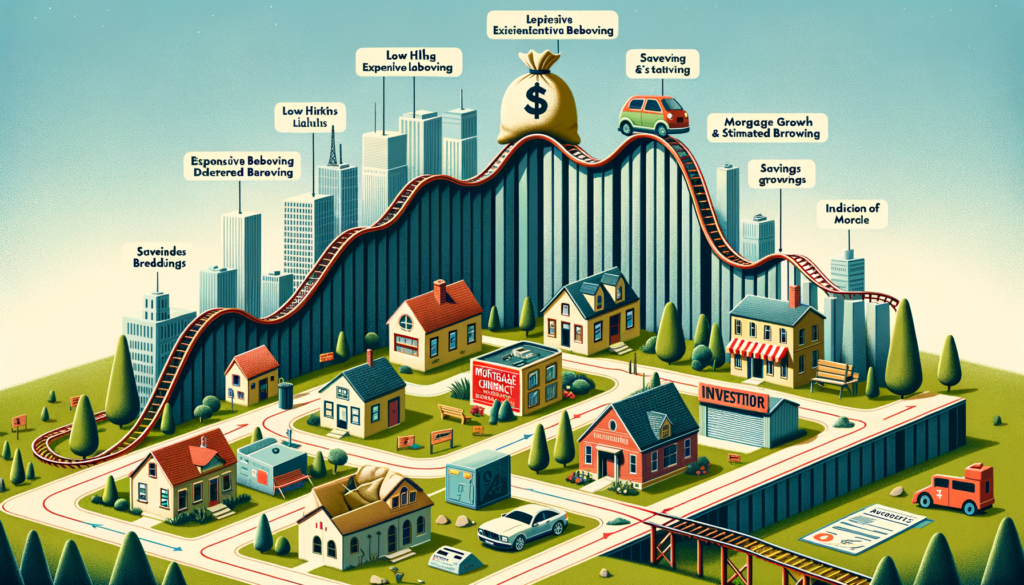Riding the Rollercoaster: Understanding Interest Rate Fluctuations in the US
Related Articles
- The Rise Of The Machines: How Automation Is Reshaping The Job Market
- Navigating The Choppy Waters: A Deep Dive Into Global Supply Chain Disruptions
- The Hot Seat: Climate Change And The US Economy
- The Ripple Effect: How US Economic Sanctions Shape The World
- The Economic Impact Of Immigration: A Complex Tapestry
Introduction
Discover everything you need to know about Riding the Rollercoaster: Understanding Interest Rate Fluctuations in the US
Riding the Rollercoaster: Understanding Interest Rate Fluctuations in the US

Interest rates are the lifeblood of the economy, influencing everything from borrowing costs for businesses and individuals to the value of investments. In the United States, the Federal Reserve (Fed) plays a crucial role in managing these rates, attempting to steer the economy towards its goals of stable prices and maximum employment. But this journey isn’t always smooth sailing. Interest rates are constantly fluctuating, driven by a complex interplay of economic factors. Understanding these fluctuations is essential for anyone navigating the financial landscape, whether you’re a seasoned investor or just starting out.
The Fed’s Balancing Act: Why Interest Rates Change
The Fed’s primary tool for influencing interest rates is the federal funds rate. This is the target rate that banks charge each other for overnight loans. When the Fed increases the federal funds rate, it becomes more expensive for banks to borrow money, leading them to raise rates on loans for businesses and individuals. Conversely, a decrease in the federal funds rate makes borrowing cheaper, stimulating economic activity.
The Fed’s decision to raise or lower interest rates is based on a variety of factors, including:
- Inflation: The Fed aims to keep inflation at a target rate of 2%. If inflation rises above this target, the Fed may raise interest rates to slow down economic activity and cool down inflation.
- Economic growth: The Fed wants to maintain a healthy pace of economic growth. If the economy is growing too slowly, the Fed may lower interest rates to stimulate borrowing and spending.
- Unemployment: The Fed aims to keep unemployment low. If unemployment rises, the Fed may lower interest rates to encourage businesses to hire more workers.
- Global economic conditions: The Fed considers global economic developments, such as exchange rates and trade policies, as they can impact the US economy.

The Impact of Interest Rate Fluctuations on You
Interest rate fluctuations have a ripple effect across the financial landscape, impacting everything from your mortgage payments to the returns on your investments. Here’s a breakdown of some key areas:
1. Borrowing Costs:
- Mortgages: When interest rates rise, the cost of borrowing money for a mortgage increases. This translates to higher monthly payments and potentially limits affordability for homebuyers. Conversely, falling interest rates can make mortgages more affordable and stimulate the housing market.
- Auto Loans: Similar to mortgages, auto loans become more expensive when interest rates rise. This can make it harder for individuals to afford new vehicles, impacting demand in the automotive industry.
- Credit Cards: Credit card interest rates are typically variable, meaning they fluctuate with market interest rates. A rise in interest rates can lead to higher interest charges on your credit card balances, increasing your debt burden.
2. Investment Returns:
- Bonds: Bonds are fixed-income securities that pay a fixed interest rate. When interest rates rise, the value of existing bonds falls. This is because investors demand higher yields on new bonds, making older bonds less attractive.
- Stocks: The relationship between interest rates and stock prices is more complex. Generally, higher interest rates can lead to lower stock valuations as investors seek higher returns in safer assets like bonds. However, rising rates can also signal a strong economy, potentially boosting stock prices.
- Savings Accounts: Higher interest rates are good news for savers, as they earn more interest on their deposits. However, rising rates can also lead to increased competition among banks, potentially resulting in lower interest rates on savings accounts.
3. Currency Exchange Rates:
- Dollar Strength: When interest rates rise in the US, the dollar tends to strengthen against other currencies. This is because higher interest rates make US assets more attractive to foreign investors, increasing demand for dollars. A stronger dollar can make imports cheaper but make exports more expensive.
Navigating the Rollercoaster: Strategies for Success
While interest rate fluctuations can seem daunting, they also present opportunities for savvy investors and borrowers. Here are some strategies to help you navigate these changes:
- Stay Informed: Keep track of economic indicators and Fed announcements to understand the factors driving interest rates.
- Diversify Your Portfolio: Diversifying your investments across different asset classes, such as stocks, bonds, and real estate, can help mitigate the impact of interest rate fluctuations.
- Refinance When Possible: If interest rates fall, consider refinancing your mortgage or auto loan to secure a lower interest rate and save on monthly payments.
- Review Your Credit Card Debt: If interest rates rise, consider paying down your credit card debt to minimize interest charges.
- Adjust Your Savings Strategy: If interest rates rise, consider shifting some of your savings into higher-yielding accounts, such as CDs or money market accounts.
FAQs about Interest Rate Fluctuations
1. What is the current interest rate in the US?
The current federal funds rate is set by the Federal Reserve and is subject to change. You can find the latest information on the Fed’s website.
2. How often do interest rates change?
The Fed typically adjusts interest rates at its eight scheduled meetings per year. However, it can also make unscheduled changes if necessary.
3. How do I know if interest rates are going up or down?
Follow economic news, pay attention to Fed statements and announcements, and consult with financial advisors to stay informed about interest rate trends.
4. What are the risks of rising interest rates?
Rising interest rates can lead to higher borrowing costs, lower investment returns, and a slowdown in economic growth.
5. What are the benefits of falling interest rates?
Falling interest rates can make borrowing cheaper, stimulate economic activity, and boost investment returns.
6. How can I protect myself from interest rate fluctuations?
Diversify your investments, adjust your borrowing strategies, and stay informed about economic trends.
7. Who benefits from rising interest rates?
Savers and bondholders generally benefit from rising interest rates.
8. Who is hurt by rising interest rates?
Borrowers, businesses with variable-rate loans, and investors in stocks and bonds can be negatively impacted by rising interest rates.
9. Can I predict future interest rate movements?
Predicting future interest rate movements is difficult, as they are influenced by a complex interplay of economic factors.
10. Where can I find more information about interest rates?
You can find more information about interest rates on the Federal Reserve’s website, financial news websites, and by consulting with financial advisors.
Conclusion
Interest rate fluctuations are an integral part of the economic landscape. Understanding these fluctuations and their impact on your finances is crucial for making informed financial decisions. By staying informed, diversifying your investments, and adjusting your borrowing strategies, you can navigate the rollercoaster of interest rates with confidence and achieve your financial goals.
References:
- Federal Reserve: https://www.federalreserve.gov/
- U.S. Bureau of Labor Statistics: https://www.bls.gov/
- U.S. Department of the Treasury: https://www.treasury.gov/
- Investopedia: https://www.investopedia.com/
- The Balance: https://www.thebalance.com/
Closure
We hope this article has helped you understand everything about Riding the Rollercoaster: Understanding Interest Rate Fluctuations in the US. Stay tuned for more updates!
Make sure to follow us for more exciting news and reviews.
Feel free to share your experience with Riding the Rollercoaster: Understanding Interest Rate Fluctuations in the US in the comment section.
Keep visiting our website for the latest trends and reviews.